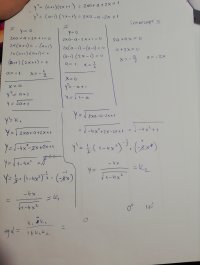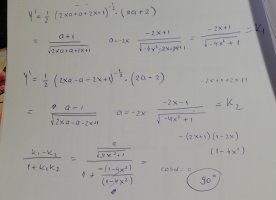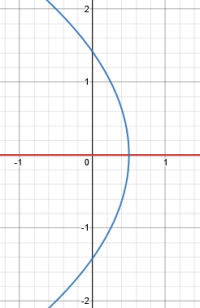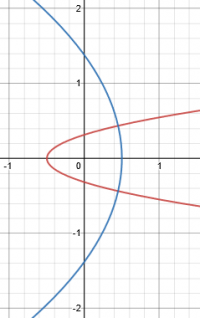First, why are you finding x- and y-intercepts at all? How is that related to the question?
Second, when you find that (for the first curve) [imath]a=-1[/imath] or [imath]x=-\frac{1}{2}[/imath], these are
two different ways in which the equation can be true with y=0. The first tells you that in the special case [imath]a=-1[/imath], the graph is the horizontal line [imath]y=0[/imath], not just a single point; x can have any value. It looks like this (the red line):
For any other value of the parameter a, the x-intercept is at -1/2, as in this example with [imath]a=-0.9[/imath]:
But, again, the intercepts are not part of the problem. The point that matters is the intersection of the two curves, when [imath]x=-\frac{a}{2}[/imath].
And in that case, you need to keep in mind that [imath]a[/imath] is a
parameter, which is to be thought of as a fixed number. The intersection is not a value of a, but a value of x. Don't express it as [imath]a=-2x[/imath]. So all that you do on the bottom of the first page is irrelevant.






